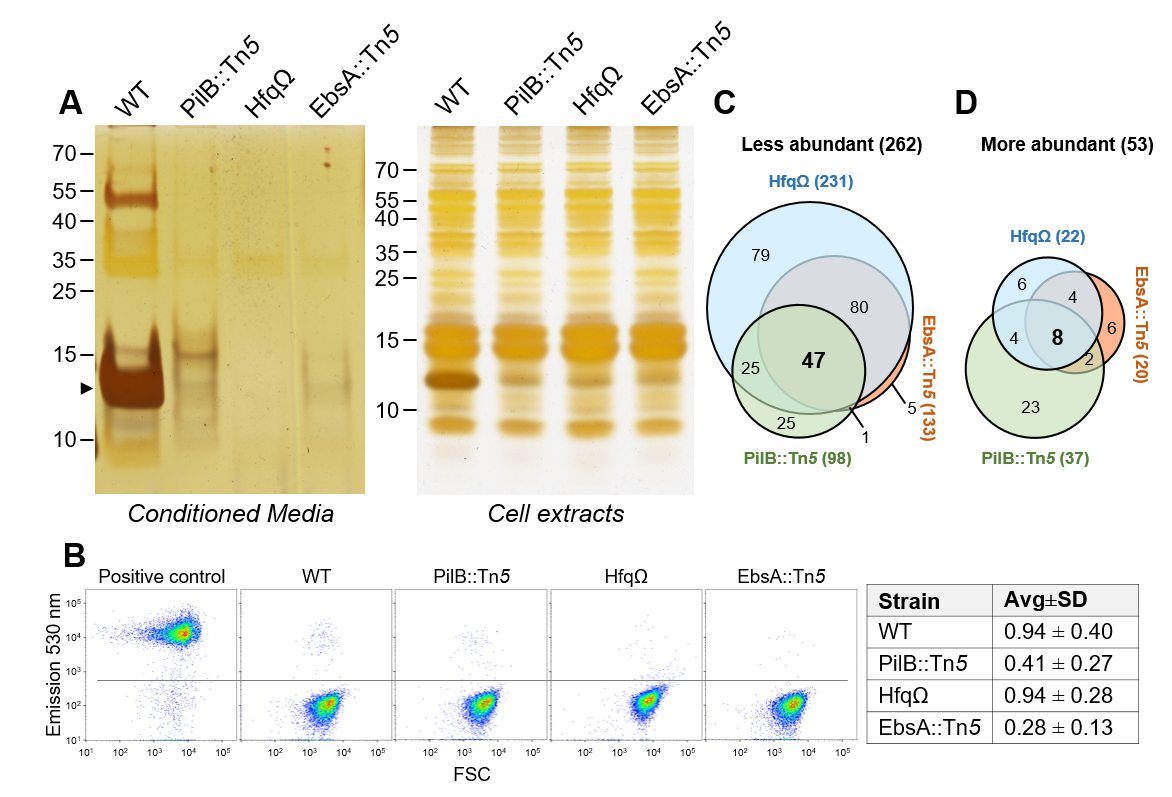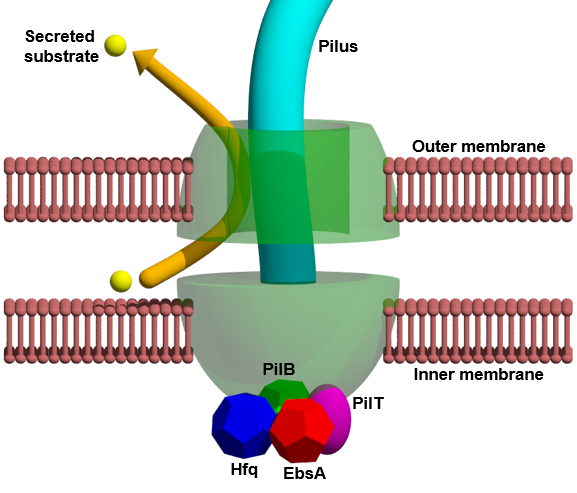To be or not to be planktonic?
The switch from planktonic growth to biofilm formation is a crucial developmental decision that substantially impact proliferation and survival. Cells within the biofilm are sheltered from harsh conditions, however, they suffer from limited light exposure due to self-shading, and thus reduced photosynthesis and proliferation. We uncovered the operation of a biofilm self-suppression mechanism that depends on an extracellular inhibitor. Downregulation of this mechanism leads to high expression and secretion of matrix components and biofilm development. We identified and characterized several genes involved in this mechanism.
Articles: https://pubmed.ncbi.nlm.nih.gov/23298171/ ; https://doi.org/10.1111/1758-2229.12751 ; https://journals.asm.org/doi/10.1128/mbio.03674-20

Exoproteome analyses of 2-day-old cultures of the WT, pilB::Tn5, ebsA::Tn5, and hfqΩ strains.
(A) Electrophoresis followed by silver staining of concentrated conditioned media (left) or cellular extracts (right). (B) Flow cytometry analyses following SYTOX live/dead staining. (C and D) Venn diagrams presenting proteins less or more abundant in the exoproteomes.

